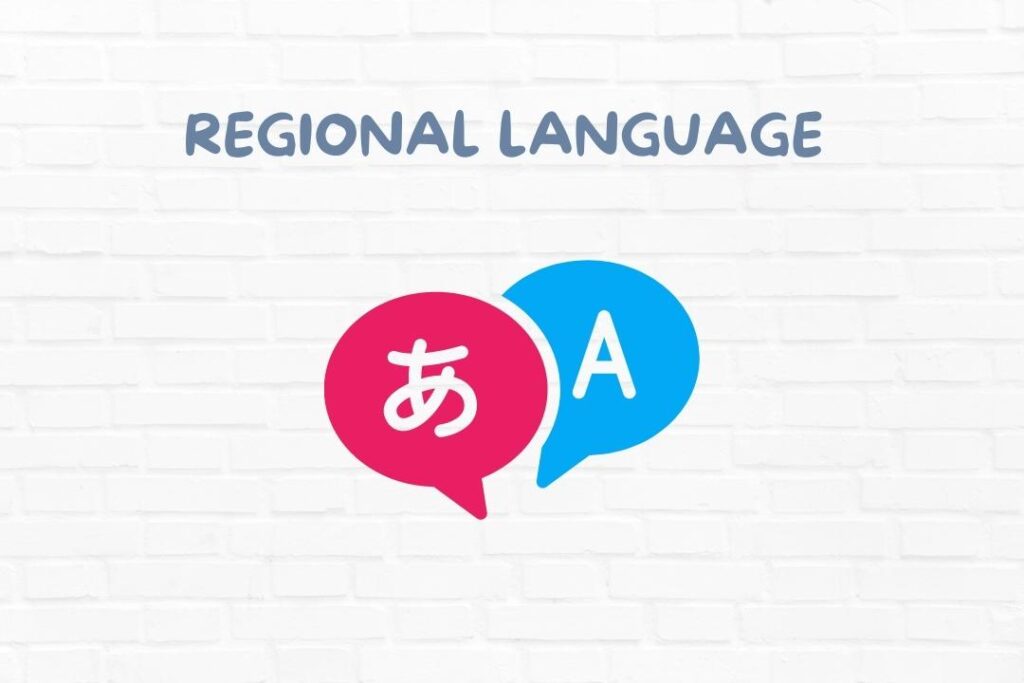The app you used last time was in your native language or do you have to struggle to understand it? The book you were explaining to your kid last night required googling or you are an expert at the language?
Do you know that you can waste hours on content and yet not get 100% out of it? It is because the content was in a language you’re not very used to. Almost every day, we come across such scenarios. This was the part of a consumer.
Now imagine yourself as a marketer or business owner. You might be educated enough to understand English or Tamil or maybe some more languages but it’s tough to learn all Indian languages. Isn’t it? Then how can you reach your target group? How can you sell your products/services and make maximum benefit when the reader is not able to connect with you?
This is where the requirement for vernacular language arises. Consider it nothing more than a native language in which local people are comfortable communicating.
Let’s understand everything about vernacular languages, the history, the current scenario, and the best solution we can expect. No matter if you’re a marketer or a consumer, this blog is a must-read for everyone!
History Of Vernacular Language
During the era of European Christian missionaries and traders, they established education institutions which they named ‘schools’. It was the Britishers’ decision that the English language and literature were to be mandatorily taught in schools. This laid the foundation of Indian modern education.
Since it was in the English language, the Western and English people were more comfortable in teaching and gave their best to lift the system which led to the improved economic status of the country. It attracted a lot of students to English schools. Those Indians who came out of English schools were quickly given jobs in the government’s policy.
As the English Empire grew all over India, it required more numbers of physicians, lawyers, engineers, and other staff.
Now, the government realized they needed to strengthen education and started setting up medical and law colleges. Later, women’s education was improved and strengthened.
Languages like Sanskrit, Persian, and Arabic become mandatory. It brought a sense of vernacular education. In 1857, the war shook the primary education system of India.
Even after developing multiple schools and colleges, the system got worse each day. Hence, Gopal Krishna Gokhale fostered primary vernacular education in 1911.
Why Vernacular Languages’ Expansion is Important?
India is a land of diversity where 30 languages and more than 600 dialects are spoken. It is so diverse that you can expect the dialect to change every 5 km. So, to reach a larger audience, the expansion of vernacular language is most important.
Currently, the government is putting all efforts to make everything digitized to make the dream of ‘Digital India’ come true! Additionally, the internet system is also faster than ever in this country which has pushed more users to use the internet and go digital. However, not all people are comfortable with English which is why they can refrain from consuming English content.
For instance, a person from a rural area is opening your website who might be your target audience and can turn into a potential customer. But if he/she doesn’t understand the website language well, then the chances are high that the person will jump out of the website.
Similarly, they will face difficulty in using an app that is designed in a non-native language. So, the motive of digitalization cannot succeed at the expected rate.
Researchers and experts have assumed that 9 out of 10 people who use the internet are from the vernacular bracket. They will be more likely to use apps and services having native language, which creates a big share of the market.
Hence, the marketers, businesses, and companies who want to reach the general mass audience of the country need to know the vernacular language of their TG.
Startups and digital experts who are ready to invest in this section should understand the importance of vernacular language to get the maximum returns.
If the education system is more focused on vernacular language i.e, in the mother tongue of the kids, they grasp knowledge at a faster rate and retain it.
The more people in the country are able to use the internet and consume content, the better they become, in terms of knowledge and skills. It will also help them to grow financially and help them to connect with a good network without any difficulties.
Popular Vernacular Languages
While we say vernacular languages we don’t mean only Hindi but there are other languages except for English that can be named vernacular like Marathi, Bengali, and more.
To be precise there are 271 vernacular languages which include Assamese Maithili, Sanskrit, and more. Indeed, Hindi and Tamil are the most popular ones.
To understand it clearly, you can visualize a chart where there are 100 people. Out of which at least 38 people are Hindi speakers. The rest of the section is covered by 6 Telugu speakers, 6 Tamil, 8 Bengali, and 9 Marathi while the rest of the 33% are those who speak different languages.
Giants Investing In Vernacular Medium Market
Vernacular language is no more a brief market but has expanded and now people are aware of it. Investors, especially, know the future market of vernacular mediums so some of them started showing responses.
- Amazon has given an option on its site to change the language to the Hindi version. In the coming decades, it is also possible that Amazon will introduce a voice-based virtual assistant.
- There are a lot of Hindi content videos available on the Netflix video streaming channels.
- YouTube has been providing videos in local languages from the beginning. T-Series, one of the most popular and largest channel hubs on YouTube, has gained millions of subscribers owing to its Hindi-centric content.
- You can also see Ola, BookMyShow, and Paytm gaining huge market reach after incorporating eight local languages.
- The social media giants like WhatsApp and Facebook are also not behind in offering services in native languages in India.
- Even Google and Microsoft are full-fledged ready to jump into the market with algorithms supporting Indian languages along with dialects.
- Heard about credit health? It is a medical app that understands and assists Hindi, Tamil, Kannada, and other native speakers, like an in-person translation, is in process.
- There are some more startups that are changing and tweaking their technology to cater to vernacular language.
What Are The Big Challenges For the Vernacular Medium Market?
When there is a big opportunity in the market, there is also tough competition which throws challenges.
Some of the challenges that VMM has to follow are,
- It’s tough to give services in all dialect languages because they are more diverse. You can expect that the dialect you are facing in a particular place is not the same when you move 6 km away.
- Creating product descriptions, FAQs and other types of content becomes complex when done in vernacular mode.
- Improving and creating algorithms to work on languages require a lot of effort.
- People are not educated enough about the internet so most of them aren’t able to change the language and use the facilities.
To Sum Up
Around 230 million people who are not comfortable with English are online every day which means the opportunity for the vernacular content market size is around 53 billion dollars. So if you are a marketer and yet not working on a vernacular medium, you’re missing something big!
Indeed there are a lot of challenges thrown at vernacular marketers but finding a solution for at least one of the problems will be beneficial for them. As a marketer, you should use your data and insights to know your audience better and their preferences.
After learning their language preferences, you need to publish multiple contents in their regional languages. It will make them more curious and engaged.
Apart from this, marketers should not only focus on creating content in various formats in regional languages but also do this in technology and apps.
From maps to strategies, whatever you provide, it should be in their native language. Last but not least, the market is expected to be sustainable so investing in it is not going to be a loss.




